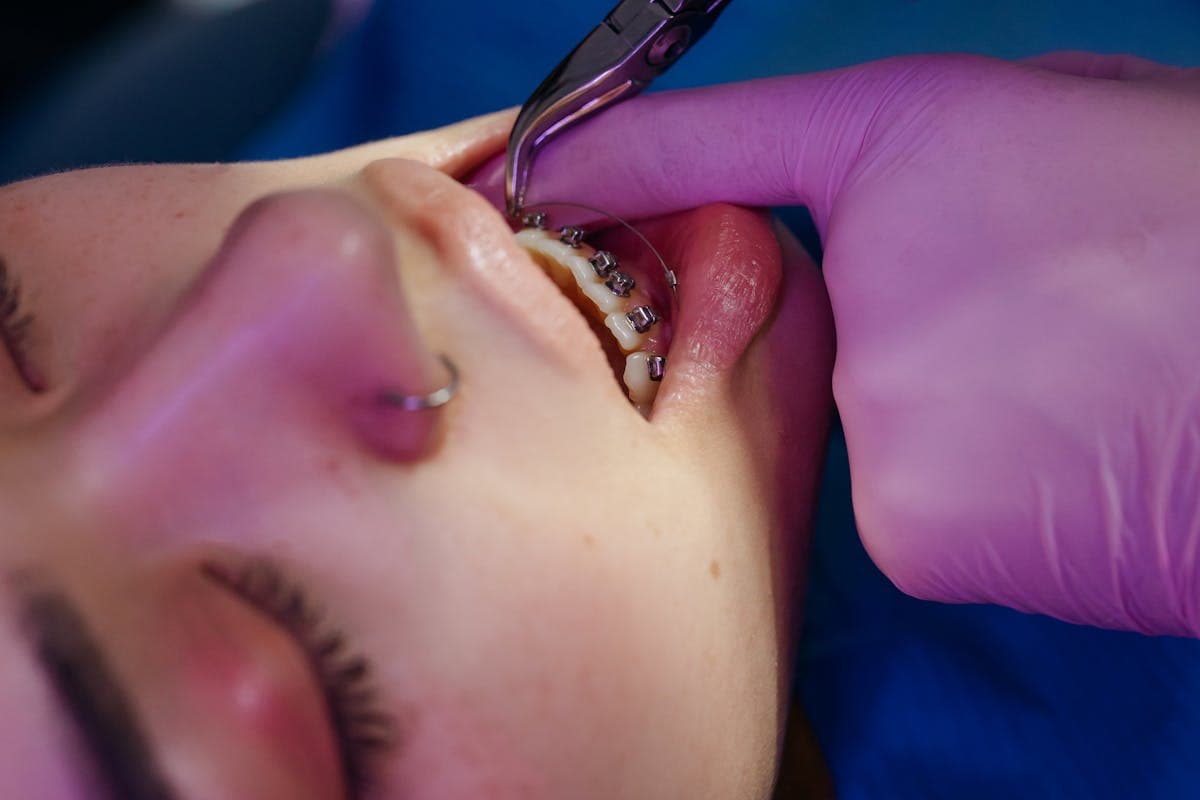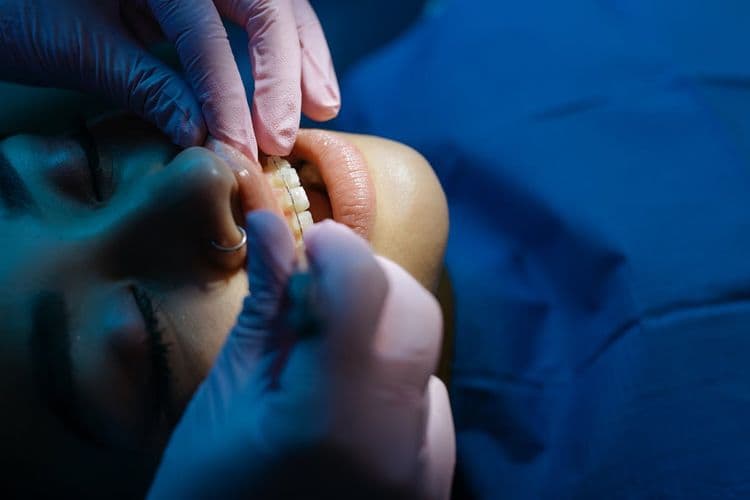The cost of braces is a multifaceted subject influenced by various elements, including the type of braces, treatment duration, and complexity of dental issues. Traditional metal braces typically cost between $3,000 and $7,000, while alternatives like ceramic braces and Invisalign range from $3,000 to $8,000. Lingual braces often demand higher expenses due to their intricate design. Geographic location and insurance coverage further impact overall expenses, highlighting the importance of understanding all potential financial factors.
Types of Braces and Their Costs
When considering orthodontic treatments, it is essential to understand the various types of braces available and their associated costs. Modern braces technology has notably evolved, offering several options tailored to diverse needs and budgets. Traditional metal braces remain widely used due to their effectiveness and affordability. However, orthodontic advancements have introduced ceramic braces, which utilize tooth-colored materials for more aesthetic discretion. Lingual braces, placed behind the teeth, provide an invisible option but come at a higher cost due to their complex installation. Clear aligners, another innovative solution, offer removable, nearly invisible trays that progressively straighten teeth, though typically at a premium price. Each type reflects a balance between functionality, visual appeal, and financial considerations, making informed choices vital for ideal outcomes.
Factors Influencing the Cost of Braces
The cost of braces is greatly influenced by the type of braces selected, as each variant comes with different material and technological complexities. Additionally, the duration of treatment plays a critical role, with extended treatment periods often leading to higher cumulative costs due to ongoing orthodontic adjustments and monitoring. These factors combined necessitate a thorough evaluation to determine the most cost-effective and clinically appropriate solution for the patient.
Type of Braces
While numerous factors influence the overall cost of orthodontic treatment, the type of braces chosen plays a significant role in determining the total expense. Traditional metal braces are often considered a cost-effective option; however, they come with drawbacks such as aesthetic concerns and potential discomfort due to metal brackets and wires. On the other hand, clear aligners present several benefits, including a discrete appearance and enhanced comfort, as they are custom-made to fit snugly over the teeth. Clear aligners can be more expensive due to advanced technology and materials used in their construction. Each type of orthodontic appliance offers distinct advantages and limitations, impacting the financial investment required for achieving ideal dental alignment. The choice between traditional braces and clear aligners should be made based on individual needs and financial considerations.
Duration of Treatment
Duration considerably affects the overall cost of orthodontic treatment, as longer treatment periods often translate to higher expenses. Treatment duration is influenced by the complexity of the dental issues, the age of the patient, and the type of braces used. On average, the timeline for orthodontic treatment with braces ranges from 18 to 36 months. More severe misalignments may necessitate extended durations, thereby escalating costs due to prolonged professional supervision and additional adjustment appointments. Additionally, the patient’s adherence to prescribed care routines can impact the treatment duration; non-compliance may result in delays. Orthodontists devise personalized treatment plans that estimate the average timeline, balancing the patient’s dental needs and financial considerations. Therefore, understanding the specific factors affecting treatment duration is essential for accurate cost projections.
Traditional Metal Braces: Pricing Overview
The cost of traditional metal braces typically ranges between $3,000 and $7,000, reflecting a variety of influencing factors. Key determinants impacting this price range include the complexity of the dental misalignment, regional cost variations, and the length of the treatment period. Additionally, orthodontist expertise and specific material choices can further modify the overall expense associated with metal braces.
Average Cost Breakdown
Traditional metal braces remain a prevalent orthodontic solution, characterized by their cost-effectiveness compared to other treatment options. The average treatment costs for traditional metal braces range between $3,000 and $7,000. This variation is influenced by multiple factors, including regional price differences, which are significant. Urban areas often present higher costs due to increased demand and operational expenses, whereas rural regions might offer more affordable rates. Despite these variations, traditional metal braces are generally less costly than alternative treatments like ceramic braces or Invisalign. It is important to note that these figures represent general estimates, and specific costs may fluctuate based on individual orthodontic cases and orthodontist pricing structures. Patients are encouraged to obtain detailed quotes for precise financial planning.
Factors Influencing Price
Several factors intricately influence the pricing of traditional metal braces, creating a complex landscape for potential patients to navigate. Key determinants include the duration and complexity of the treatment plan, which are typically assessed during initial orthodontic consultations. The severity of dental misalignment directly impacts the overall cost. Additionally, geographical location plays a significant role, with urban areas often imposing higher fees due to increased operational costs. Braces maintenance also contributes to the final price, encompassing routine adjustments and potential repairs over the treatment period. Moreover, the level of expertise and reputation of the orthodontist can affect pricing, as highly experienced practitioners may command premium fees. Collectively, these elements form a multifaceted pricing structure for traditional metal braces.

Ceramic Braces: What to Expect
How do ceramic braces differ from traditional metal braces, and what should patients anticipate when choosing this orthodontic option? Ceramic braces employ brackets made from clear or tooth-colored materials, offering aesthetic advantages. One of the primary ceramic braces benefits is their reduced visibility, making them preferable for individuals concerned with appearance during orthodontic treatment. Patients should expect a diligent maintenance routine, as ceramic brackets can be more prone to staining. Ceramic braces maintenance involves regular brushing and avoiding pigmented foods and beverages to preserve their discreet appearance. While they are effective in aligning teeth, they may be more fragile compared to metal counterparts, necessitating careful handling. Patients should consult with orthodontic professionals to understand the full scope of ceramic braces’ functionality and care requirements.
Invisalign and Its Pricing Structure
When considering modern orthodontic solutions, Invisalign emerges as a popular choice due to its unique approach to teeth alignment. This clear aligner system offers significant Invisalign benefits, such as improved aesthetics and comfort, appealing to those seeking a discreet treatment. The system uses custom-made, removable aligners that gradually shift teeth without the need for metal brackets or wires. However, Invisalign limitations exist, including suitability constraints for complex cases that may require traditional braces.
The pricing structure for Invisalign varies, typically ranging between $3,000 and $8,000, contingent on factors such as treatment complexity and geographic location. While often comparable to traditional braces in cost, Invisalign’s value lies in its enhanced convenience and appearance, making it a viable option for many orthodontic patients.
Lingual Braces: Cost Considerations
Lingual braces present an advanced orthodontic solution by positioning the braces on the interior surface of the teeth, rendering them virtually invisible from the outside. This discreet alignment method offers significant lingual brace advantages, particularly for patients concerned with aesthetics. However, this innovative design can result in higher costs compared to traditional braces. The intricate customization required for lingual braces contributes to the elevated expense, as each bracket is individually tailored to fit the patient’s dental structure.
Maintenance of lingual braces demands meticulous attention, as the interior placement complicates cleaning, necessitating specialized tools and techniques. Regular appointments are essential to guarantee proper alignment and to address potential issues such as tongue irritation. While the financial investment is considerable, the aesthetic benefits and effective results justify the cost for many patients.
Geographic Variations in Braces Costs
The cost of braces can vary considerably depending on geographic location, reflecting differences in local economic conditions, availability of orthodontic specialists, and regional pricing norms. In urban areas, where the density of orthodontists is typically higher, competitive pressures may lead to more diverse pricing structures. However, urban centers often exhibit higher operational costs, which can elevate treatment fees. Conversely, rural regions may present limited access to orthodontic providers, potentially resulting in higher prices due to reduced competition. Regional pricing is also influenced by the socioeconomic status of the area, with wealthier regions potentially supporting higher costs. Additionally, state regulations and local healthcare policies can impact the cost structure of orthodontic services, contributing to significant geographic disparities in braces pricing.
Insurance Coverage for Orthodontic Treatment
Understanding the financial landscape of orthodontic care involves not only geographic considerations but also the role of insurance coverage. Insurance policies often influence the affordability of braces, varying considerably regarding coverage limits and eligibility criteria. Typically, orthodontic insurance is included as a rider within general dental policies, but not all policies offer this rider. Coverage limits may differ, frequently imposing a lifetime maximum, which can range from $1,000 to $3,000, depending on the provider. Some policies may cover a percentage of the treatment cost, while others might offer a fixed amount. Additionally, age restrictions are common, with many policies only covering patients under 18 years old. Understanding the intricacies of insurance coverage is essential for anticipating out-of-pocket expenses in orthodontic treatment.
Payment Plans and Financing Options for Braces
While maneuvering the financial aspects of orthodontic care, patients often explore various payment plans and financing options to manage the cost of braces. Dental clinics frequently offer structured payment options, such as monthly installments, which can ease the financial burden by distributing costs over time. Additionally, third-party financing companies provide specialized loan products tailored for orthodontic treatments, ensuring manageable payments. Financial assistance might also be available through dental discount plans, which offer reduced rates for orthodontic services. Some orthodontists collaborate with national financing programs that extend low-interest or no-interest plans. Moreover, patients can utilize Health Savings Accounts (HSAs) or Flexible Spending Accounts (FSAs) to allocate pre-tax dollars toward their orthodontic expenses, thereby optimizing their financial resources and minimizing out-of-pocket expenditures.
Frequently Asked Questions
How Long Do I Need to Wear Braces?
The braces duration varies depending on individual dental needs. Typically, the treatment timeline ranges from 18 to 24 months. Factors influencing this include the complexity of dental issues, patient compliance, and orthodontist’s expertise in managing the alignment process.
Can Adults Benefit From Braces?
Adults can indeed benefit from braces. Adult orthodontics addresses misalignment, improving oral health and aesthetics. The benefits of braces include enhanced functionality, reduced risk of dental issues, and increased confidence, leading to overall improved quality of life.
Are There Any Dietary Restrictions With Braces?
Braces necessitate specific dietary modifications to prevent damage. Patients should avoid hard, sticky, or chewy foods, which could dislodge brackets. Adopting careful eating habits with softer food choices is essential to maintain braces’ integrity and effectiveness.
What Are the Common Side Effects of Wearing Braces?
Common side effects of wearing braces include discomfort, soreness, and irritation. Pain management techniques such as cold compresses and over-the-counter medication can alleviate discomfort. Maintaining meticulous oral hygiene is essential to prevent plaque buildup and tooth decay.
How Often Are Orthodontist Visits Required With Braces?
Orthodontist appointments for braces maintenance are typically scheduled every 4 to 8 weeks. These visits are essential for adjusting wires, monitoring progress, and ensuring the overall effectiveness of the orthodontic treatment plan.


